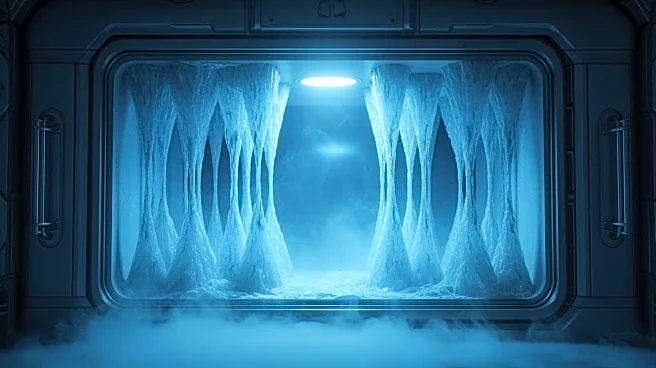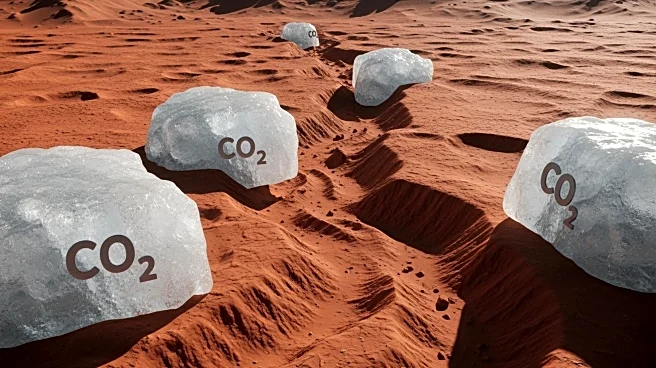What's Happening?
Researchers have captured a rare view of Mars' polar vortex, revealing extreme winter conditions at the planet's north pole. Inside the vortex, temperatures drop significantly, allowing ozone levels to rise due to the freezing of water vapor. Dr. Kevin
Olsen from the University of Oxford presented these findings, highlighting the importance of ozone in understanding Mars' atmospheric chemistry. The European Space Agency's ExoMars Rosalind Franklin rover, set to launch in 2028, aims to search for ancient life traces, potentially influenced by a past ozone layer.
Why It's Important?
The study of Mars' polar vortex is crucial for understanding the planet's atmospheric dynamics and potential habitability. Ozone levels provide insights into the chemical processes and historical atmospheric changes on Mars. If Mars once had an ozone layer, it could have shielded the surface from harmful radiation, making it more hospitable to life. This research could inform future missions and the search for life on Mars.
What's Next?
The ExoMars Rosalind Franklin rover will further investigate Mars' surface and atmosphere, seeking evidence of ancient life. Continued observations of the polar vortex will enhance understanding of Martian atmospheric conditions and their implications for habitability.
Beyond the Headlines
The study of Mars' polar vortex offers a unique opportunity to compare atmospheric phenomena between Earth and Mars, providing broader insights into planetary science and climate dynamics.













